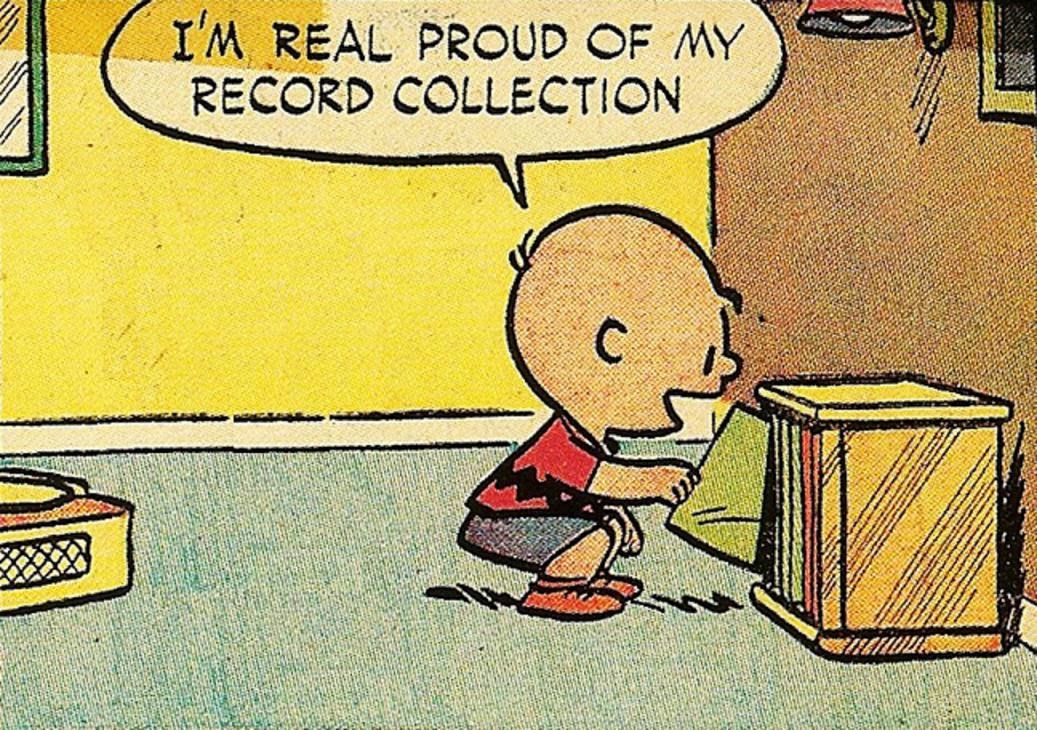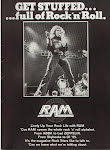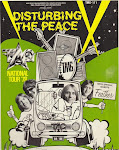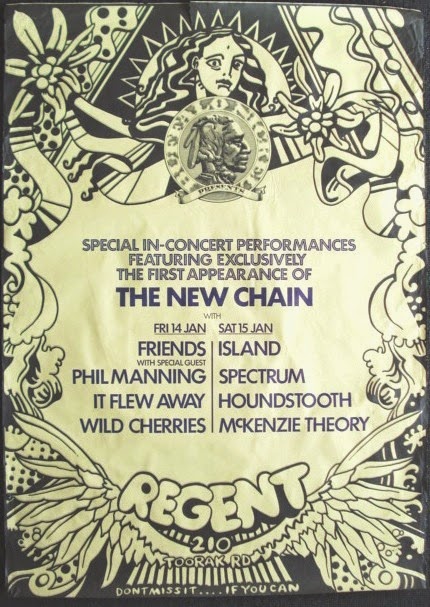(U.S 1946 -1998)
Following the release of his LP 'Some Nice Things I've Missed',
Frank Sinatra embarked on a six-concert tour in 1974, working with Woody Herman & the Young Thundering Herd, which was conducted by Bill Miller, Sinatra's longtime pianist. Dubbed "The Main Event," the tour culminated with a televised concert from Madison Square Garden on October 13, 1974.
Subtitled "Live From Madison Square Garden," this album isn't an exact document of the concert. Instead, it's a compilation taken from various shows on "The Main Event" tour; on two songs, "I Get a Kick Out of You" and "Let Me Try Again," two performances are spliced together. Even if it constructs a concert - which the good majority of live albums from the '70s tended to do - The Main Event is a delight, full of inspired performances. While there are a couple of contemporary numbers thrown in, the majority of the songs are standards, from "The Lady Is a Tramp" to "I've Got You Under My Skin."

Both Sinatra and and his backing band 'Herman's Herd' are lively, spurring each other on to consistently strong performances. Sinatra's singing might be a little too loose for some tastes, as he injects lyrical asides, impressions, and jokes throughout the record, as well as occasionally changing the lyrics by making them a little more "hip." Nevertheless, his singing cannot be faulted. Not only does he sound fine on his trademark numbers, particularly a lovely piano duet on "Angel Eyes," but he brings the contemporary material to life, which he failed to do in the studio. Even with all of its pleasures, The Main Event remains a minor entry in Sinatra's canon - dedicated fans will certainly find more to cherish here than the casual listener - but it remains one of his most enjoyable records of the '70s. [extract from AllMusic.com]
New York Times Concert Review (Oct 14, 1974)Frank Sinatra's hour‐long live telecast last night from Madison Square Garden turned out to be quite show, both for television watchers and for those actually at the Garden. It was certainly a high point in Mr. Sinatra's career, and it came, of all eves, on the eve of Columbus Day.
Mr. Sinatra sang 11 songs in all, ranging from old favorites like “Lady Is Tramp” and “I've Got You Under My Skin” to recent hits like “Leroy Brown” and “You Are the Sunshine of My Life” to his signature song, “My Way,” at the end.
The show was telecast directly or on a delayed basis throughout the Western Hemisphere, and the promoters grandly claimed a potential audience of 490 million. The 20,000‐plus at the Garden missed some of the TV show's closeups of Mr. Sinatra, rapturous fans and celebrities like Robert Redford, Carol Channing, Rex Harrison and John V. Lindsay.
But what the Garden audience did get that home viewers didn't—apart from the dubious virtues of the warmup show—was the immediacy of actually being there. And the exigencies of a live TV show, which normally entails obtrusive cameras and blinding lighting, were remarkably camouflaged: the dappled lighting effect on the crowd that looked so good on television looked even prettier in person.
As he had on Saturday night, Mr. Sinatra worked easily on all four sides of what looked to be a disguised boxing ring in the center of the Garden floor, flanked on one side by Bill Miller leading a 40‐piece orchestra.

Both nights Mr. Sinatra managed to hold his audience securely under his spell. The voice may have its failings—it always did, really. But it has its unique virtues, too, and as a stylist of a certain kind of pop‐jazz sensibility, Mr. Sinatra remains the master of his generation.
There were many or that generation at the Garden over the weekend, but Mr. Sinatra's appeal is more to a social strata—the white middle class and lower‐middle class—than to a particular age group. For them, he remains a spokesman and even a hero, and all his much publicized private imbroglios and feuding with the press only add leaves to his laurel.
But his excellence as a singer and as a singing actor are such that his appeal easily transcends such limitations. When Mr. Sinatra is doing his thing, which is singing songs, he exercises his craft so securely that one forgets everything else. The man is one wonderful entertainer, and millions of people had that fact reaffirmed last night. [extract from
The New York Times]

While researching for this post, I discovered that Sinatra had toured Australia in the same year during July, however the tour was classified as a 'complete disaster' due to a dispute that Sinatra had with the Australian Media. The following article explains what happened and how Bob Hawke (future Prime Minister of Australia and President of the ACTU at that time) helped to diffuse the situation with Sinatra's black ban by the Australian Trade Union.
Sinatra In Australia, 1974 (The Tour Disaster)Frank Sinatra was many things: musical genius, cultural icon, magnet for power. But when it came to the women's liberation movement, he was more of a 'do it my way' kind of guy.
And during a 1974 tour to Australia, he said the wrong thing to the wrong people at the wrong time.
"The broads who work in the press are the hookers of the press. I might give them a buck-and-half, I'm not sure," Sinatra told a crowd at Melbourne's Festival Hall.The on-stage slur set in motion a bizarre series of events that sparked a lengthy siege — and was only resolved thanks to some clever peace-brokering by future Australian prime minister Bob Hawke.
Sinatra arrived in Australia in July 1974, having removed the shackles of a short but uncomfortable retirement from showbusiness. He was back in the game, but his 59 years on earth showed.
His levels of alcohol consumption were gargantuan — often two bottles of Jack Daniels a day — and he smoked at a similar rate. "He was insecure, about his looks, about his voice," Sinatra biographer James Kaplan says. "And he didn't like the way the world was."
'A complete frenzy'As Ol' Blue Eyes was battling his demons, women in Australia were exorcising theirs. Feminism was in the ascendency, and the women's liberation movement had begun dismantling the social constructs of the workplace. "I think all female journalists were feminists, you had to be," says former ABC journalist Margot Marshall.
%20with%20Robert%20Raymond%20and%20Gough%20Whitlam%20during%20the%20scandal-riddled%201974%20tour%20(ABC%20Archives%20).jpg) |
Frank Sinatra (centre) with Robert Raymond and Gough Whitlam
during the scandal-riddled 1974 tour (ABC Archives ) |
Sinatra refused to talk to the media, of either sex, while in Australia. There would be no interviews, no press conferences. Obliged to cover the tour even without hearing from the man himself, the press hounded Sinatra. "The media were determined to get to him," says Sinatra's Australian concert producer Robert Raymond. "It was a complete frenzy."
The media chased his motorcade, mobbed his hotel, corralled him at concert venues and generally made sure Sinatra's team of bodyguards were earning their dime. Media reporting of the tour covered the usual Sinatra fodder — mob connections and ex-wives. In general, there was a sense of cutting the tall poppy down to size.
By the time he took the stage for the first time at Melbourne's Festival Hall, Sinatra was ready to unload. "They're parasites. They're bums and they're always going to be bums," he said of the press. "They're pimps, they're just crazy. A pox on them." Then he rolled out his line about female journalists being hookers. That was the turning point.

'A superstar gets blacklisted'
Frank's comments were poisonous, but they were also mistimed. You just couldn't publicly put women down in that way anymore. "What an ego!" says Marshall, who remembers one fellow journalist calling him a pig. "Our backs got up and we thought 'we're not going to put up with this!'"
The unions also read the room. They knew it was feminism, not chauvinism, that was the prevailing social movement of the day. Workers from the Australian Theatrical and Amusement Employees Association, who controlled the lighting, staging and musicians for Sinatra's tour, announced they would strike until they got an apology from the crooner. It was not forthcoming.
"Unless within 15 minutes Mr Sinatra had an apology for '15 years of shit' from the Australian press, he would be leaving the country within the hour," was the response given to the unions after a meeting with Sinatra's lawyer. The Transport Workers Union joined the fray the next day, refusing to fuel any jet — private or commercial — that Sinatra attempted to fly on.
This soon expanded to a total black ban from every union that mattered. Sinatra was grounded and under siege.
The strikes coincided with Sinatra's second show in Melbourne, scheduled for that same day. But with no musicians, no stage, no drivers, room service, the show would not go on.
Sinatra somehow flew back to Sydney that night — some media reported his private jet had enough leftover fuel to make the trip, while other reports have him sneaking onto an Ansett flight under an assumed name.
'Hawke swoops in to broker peace'
The following night, at the 11th hour, an expert negotiator was called in. "There's only one man who can solve this for you," then prime minister Gough Whitlam said in a phone call to the Sinatra hotel suite. "Bob Hawke." Mr Hawke was indeed the man for the job. As president of the Australian Council of Trade Unions (ACTU), he was sent in to try to broker a deal to lift the black ban. Mr Raymond took the future PM up to the suite. "I noticed that the dining table had on it a bottle of Courvoisier and a box of cigars. That was it! No papers or anything," Mr Raymond says.
 |
| Bob Hawke being grilled by the press over the Sinatra dispute |
After many drafts of a 'statement of regret', and many draughts of the brandy, Mr Hawke and Sinatra's lawyer Micky Rudin managed to hammer out a deal. Mr Hawke had negotiated hard.
"He was half pissed, almost legless," Mr Raymond says. "Micky knew how to get to Bob Hawke: that bottle of Courvoisier." Ultimately, the joint statement of regret from the crooner and unionists — read by Mr Hawke on the steps of Sinatra's hotel — in effect agreed to disagree.
It was not an apology per se from Sinatra, nor journalists or unions; more a statement that both had a job to do and could, within reason, say whatever they pleased. A concession from Sinatra's lawyer was that to televise one of his Sydney's shows as a gesture of good will to fans who missed out in Melbourne. It was a draw; neither side had much to gain by Sinatra leaving. The unions had their PR win, while Sinatra was keen to complete his payday and maintain the momentum of his comeback tour. So the tour went on and Sinatra sang to adoring crowds in Sydney before leaving Australia.
 |
| Bob Hawke making his way to Sinatra's Hotel Suite |
"His feathers were ruffled while he was in Australia, but the minute he was back in the United States his feet were being kissed again by everybody in sight," Kaplan says. Sinatra performed at Madison Square Garden in New York later that year.
"Ol' Blue Eyes is back", he told the audience. "Or as they say in Australia, 'Ol' Big Mouth is back!'"[extract from the
ABC Website]
I know this post is not my usual genre of music, however I can appreciate the music of the 50's and 60's which helped formulate the music in which I grew up with during the 70's. Frank Sinatra was one of those people who I saw and heard on early T.V, along with Dean Martin and Sammy Davis Jr. (alias The Rat Pack)
So when I stumbled upon this album at my local flee market some time ago, I couldn't resist buying it and giving it a spin. If you ignore the first track (Overture with dialogue) which is painfully boring and really annoying, you will be pleasantly surprised with the quality of the music and song listing on this live recording. Most of Sinatra's biggest hits are included, with the exception of "New York, New York", which I have chosen to include as a bonus track to sweeten the deal.
The post consists of MP3's (320kps) ripped from my near virgin vinyl and includes full album artwork and label scans.
Track List
01 Overture (with dialogue) 3:00
02 The Lady Is A Tramp 2:45
03 I Get A Kick Out Of You 4:00
04 Let Me Try Again 3:10
05 Autumn In New York 2:35
06 I've Got You Under My Skin 3:25
07 Bad, Bad Leroy Brown 2:34
08 Angel Eyes 3:38
09 Dialogue / You Are The Sunshine Of My Life 5:50
10 The House I Live In 6:45
11 My Kind Of Town 2:32
12 My Way 4:57
13 Theme From New York New York 3:28 (Bonus Studio Track)
Tracks 10 and 12 recorded in Boston Garden, October 2, 1974
Tracks 6 and 8 recorded at Buffalo Memorial Auditorium, October 4, 1974
Track 5 recorded in Madison Square Garden, October 12, 1974
Tracks 1–4, 7, 9, and 11 recorded in Madison Square Garden, October 13, 1974

























%20with%20Robert%20Raymond%20and%20Gough%20Whitlam%20during%20the%20scandal-riddled%201974%20tour%20(ABC%20Archives%20).jpg)


























.JPG)
.JPG)
















